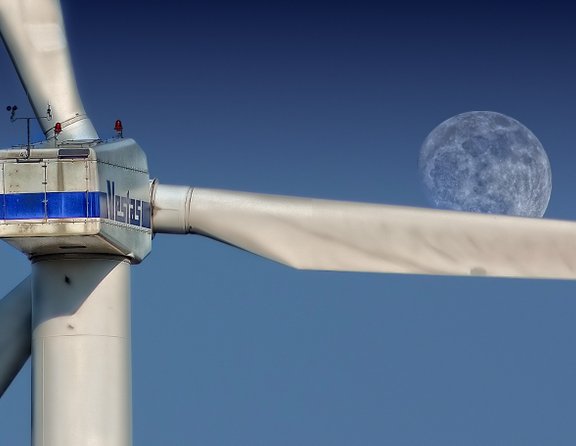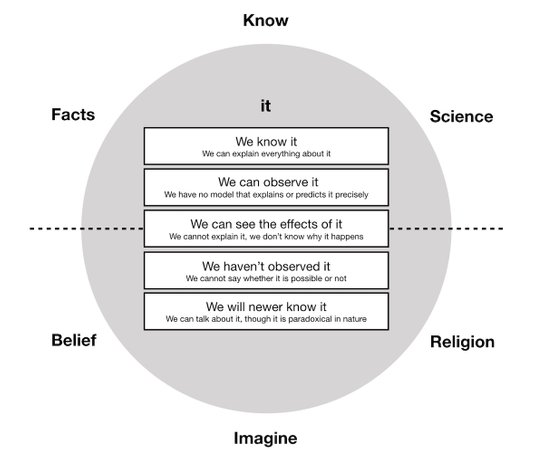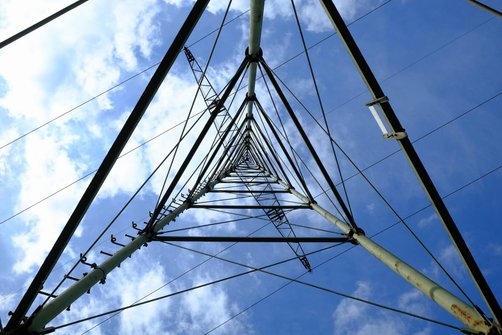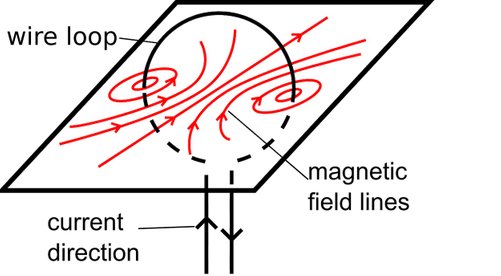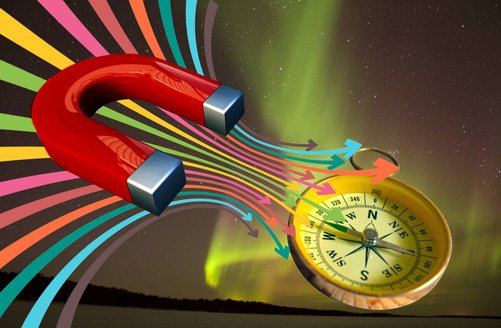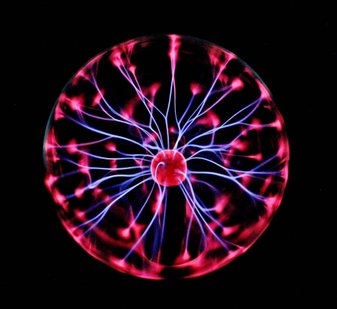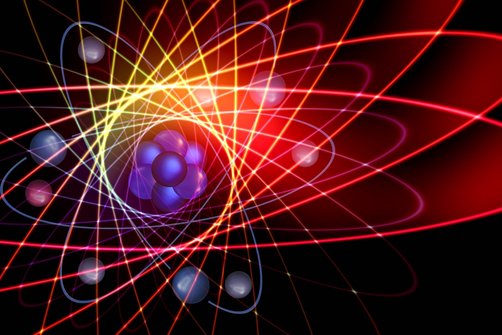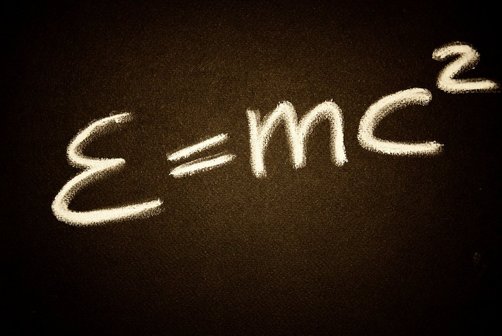Mechanics, Gravity, Electricity & Magnetism
The science of physics is about all that. The DNA of every physicist is about wanting to know everything about the inner workings of the Universe, what stuff is made of, and why objects are behaving and reacting the way they are. The primary tool - and product - of the science of physics, is the scientific theory.
A scientific theory is something completely different than speculations and imagination. When we say that our theory can explain something, what we mean is that for all we know, the theory matches the observations, and has even shown the strength to be able to predict the outcome of experiments that we haven't done yet. Science is the opposite of Religion. Science will never take upon itself to construct a theory that, for instance, would try to explain the existence of God. Because if the entity in question has no physical representation, and there is no way you can register it, and no possible way of performing experiments on it, it is not of scientific interest.
This is not said in any offensive, or judgemental way. In fact, many scientists are also religious. The point here is, that there are only so many questions that science can help answering. And the rest is something each of us decide ourselves, how to deal with.
But physicists gladly takes upon themselves the challenge of theorizing about time, other dimensions, the rules that governs the Universe and the internal structure of everything that we are and what surrounds us?
The greatest paradoxes of all, are hiding in the answers to these questions. At first it may seem abstract and not rooted in common sense. But it actually is. And the epiphany that stems from this, is nothing short of beautiful.
Below are 6 short articles, on 6 essential physics topics, written in a way so that you don't have to be a mathematician or physics student to understand them.
Be aware that they represent theories, and not facts. Because the topics discussed here will never be proven, because they are on the borderline between physics and philosophy, and you might even argue, religion.
if you wonder about these topics, and believe that simplicity is the ultimate sophistication, then you will be enlightened and pleased by this, and be grateful for this insight - I sincerely am.
THE ELEMENTS OF OUR DAILY LIVES:
It's all around you, and in everything you use
The most relevant part of the science of physics - unless you are a nuclear physicist - is about stuff that you already know, or at least have a very intuitive sense of, and are actively engaging with, each day, possibly without even realizing it.
When you drive you car, gets exausted from climbing the stairs, tries to get the ball through the hoop, enjoys the attractions in the amusement park.
When you turn on the light, use the electrical toothbrush, flush your toilet, plays you accoustic guitar, take the tram for work, use the elevator to the 17'th floor.
When you cook your dinner and watch television, use your mobile phone etc.
The list is almost endless, and actually - if you believe in determinism - physics and chemistry is the starting point of all events you experiences in your live. And if you are physicist, you will also argue that chemistry is merely a sub branch of physics.
Objects and Forces
Did you hear the story about the apple that fell on the top of Newtons head ?
Bodies in Motion
Direction
Speed
Acceleration
Solids and Fluids
?
Current, Magnets and Invisible fields
?
Practical manifestations of physics in our daily lives
Physics is the science that paved the way for steam engines, light bulbs, binoculars, telecommunication, mobile phones, radars, computers, lasers, airplanes, medical x-rays, wind turbines, solar panels, musical instruments, the electricity power grid, the electrical heater, the television set and the appliances in your kitchen, like your oven, microwave and fridge. The list goes on and on and on.
Let's spend the last paragraph listing a few key physics concepts that has invaded our language and become part of our intuitive understanding of the world around us.
Practical manifestations of physics in our daily lives
As you have understood by now, physics is the science about the fabric of space, time, light, inner workings of atoms and particles and the 4 fundamental forces that explains how it all interacts. This represents knowledge that you need to have, if you must explain what is going on inside an atomic reactor or in outer space, in stars and back-holes. But physics is also the foundation for many, many things in our daily lives.
Physics is the science that paved the way for steam engines, light bulbs, binoculars, telecommunication, mobile phones, radars, computers, lasers, airplanes, medical x-rays, wind turbines, solar panels, musical instruments, the electricity power grid, the electrical heater, the television set and the appliances in your kitchen, like your oven, microwave and fridge. The list goes on and on and on.
Let's spend the last paragraph listing a few key physics concepts that has invaded our language and become part of our intuitive understanding of the world around us.
Electricity
When you flip the switch, the light bulbs starts glowing. You might think nothing of it, but some of the greatest minds, both in physics and engineering, has worked hard to bring this basic convenience to the world. Electricity is particles called electrons, moving through an electron conducting material such as a copper wire. If the electrons are pushed through a medium that offers resistance to the movement, if will produce heat. This is what happens in the light bulbs wire, and therefore makes it glow. Electricity is the one invention that has, and will, impact your life the most, because the applications are endless.
Magnetism
Electricity and Magnetism are close siblings. The one can produce the other and vice versa. When a wind turbine rotates, it produces electricity. This is because the turbine holds magnets that when moved in close vicinity of an electricity conductor will create a momentary electric current in the conductor. And likewise, a current in a wire, will generate a magnetic field around the wire. Magnetism is a force that is being generated, when electric fields in the fabric of space changes. This change of the electric field can either originate from electrons moving across space, or from electrons spinning round on the spot, so to speak. I either way, what is creating the magnetic field, is fluctuations in the space fabric, as a consequence of the fluctuations in the wave pattern around an electron. Magnetic forces works in two directions, with two different effects - push and pull. This is why we use the terms north and south, when talking about magnets. This is also why there can not exist a magnetic north without a south. Because they are merely the front and back of the same phenomenon.
Static electricity and Charge
Electrons does not have to move around or spin, to inflict forces onto its surroundings. Electrons are what is called charged, which is another way of saying that all the time, there exists an electric field flowing from the electron and outwards, in all directions. This field exerts push forces on other electrons, which essentially means that electrons in close vicinity will always try to expel each other. This force is exploited in many ways in electronic devices. But it can also be experienced in daily life, for instance when lightning strikes, when dust clings to the television screen, or when you forget to turn off the switch when changing the light bulb, and almost get electrocuted.
Gravity
The Moon circulates the Earth as if it is held in place by an invisible string. And an apple races to the ground, if it is detached from the tree branch that it was hanging on. We cannot see the force, but we can conclude that it is there, and that it is real. What this tells us is, that each atom (which everything on Earth, the Moon and the apple is made of), vibrates in a certain way that creates what we call gravity waves. And these gravity waves propagates through the fabric of space, and when it hits another atom, this atom will feel a force that in effect will try to translocate this atom in the direction of the source of the gravity wave.
Gravity waves are not particles. If you have ever been confronted with the idea of a graviton - expected to be a particle that "carries" the gravitational force - please wipe it from your memory. Force fields are continuous and not discrete. The Earth is not shooting with "gravity particles", in random directions.
The Earth is simply oscillating with a rhythm and a pattern that creates gravitation ripples in the space fabric. And it is these ripples that are propagating to the Moon, and beyond.
To avoid any misunderstanding, let me remember to say this; it is not only the Earth that exerts a pull on the apple. Actually, the apple also exerts a pull on the Earth, though this is a very, very weak force. Because the strength of the gravity wave is determined by the complete mass of the entire object exerting the pull - for instance the Earth, in effect the force felt by the Moon is much stronger than the force felt by the Earth.
Please notice this. The forcefields mentioned above - magnetic fields, electrostatic fields and gravitational fields - are 3 different wave patterns, originating from 2 different sources namely particles with charge and particles with mass.
Both type of fields are spherical in nature, propagating in all directions equally, as 3 dimensional spherical waves moving from the core and outwards, to the farthest corners of space. And the propagation happens not instantly, but at the speed of light.
Temperature
You know that it's cold in Greenland, and even colder at Antarctica. But how cold can it actually get? Our intuition would tell us that it can get arbitrarily hot and arbitrarily cold. It's simply a matter of enough heat or enough cooling. But that is not the case.
Temperature is a measurement of how agitated the space fabric is. Light pulses traveling trough empty space, is almost as still a space as you can imagine. If the space fabric is not even rattled by occasional light passing through, the fabric would be completely flat and uninteresting. Physics has introduced a specific temperature scale to be used, when describing physical phenomena and the relationship to temperature. This scale is called the Kelvin scale.
The coldest physical object that you - theoretically - can have, would be zero Kelvin in temperature. This would in layman's terms translate to that the object at this temperature has zero energy, by that is not the case. A better way to explain it would be, that the object at that temperature is in its least agitated state. The atoms would still be oscillating, but just not so vigorously as they would, at higher temperatures.
Sidenote: remember that the atom and the oscillation is one and the same. Without the oscillation, there would be no atom.
And now the fun starts. Because if we compare this zero-kelvin temperature with the well known celcius scale that we are so used to, what does this compare to?The answer is approximately minus 273 degrees. Nothing - and I mean nothing - can get colder than that. Ever. And empty space does not count in this discussion, because empty space is not agitated, and therefor has no temperature either. And before you start talking about our solar system, then please remember that the empty space I'm referring to, is the space fabric far, far away, outside the rim of the Universe. The untouched fabric of space.
Matter and Inertia
An iron bar is heavier than a feather. In our minds, this is easy to acknowledge, because we know its harder to lift an iron bar from the floor and up onto the table, than lifting the feather the same distance. But experiments have also showed that if there were no air, and the iron bar and the feather fell from the table, they would hit the floor at exactly the same time (experiments performed in vacuum - and on the moon - has actually proven this to be true). So what are we really saying, when stating that the iron bar is heavier than the feather.
The term heavy refers to the fact that the pull from Earth's gravity field exerts a strong pull on the Iron bar. And as stated previously, the strength of the pull is proportional to the intrinsic masses of the Earth and the iron bar. And the iron bar has certainly more mass than the feather. And there are 3 reasons for that. First, the Iron atom is heavier than the Carbon, Hydrogen, Oxygen and other atoms that are the key ingredients of the feather. Secondly, the density on atoms in a metal is typically higher than the density in organic material. The third reason is, that the amount of atoms is higher in the iron bar, compared to the feather, simply because the volume of the iron bar is (in most cases) larger than the volume of the feather.
Let's pause for a moment. How do we actually know that the pull from the Earth is stronger on the iron bar than the feather? Luckily this is easy to prove. Putting the iron bar on top of a scale, will squeeze the scale's springs a lot more than when replacing the iron bar with the feather. Basically, the scale's mechanical function is indifferent to the strength of the gravitational field, and simply reacts to the force applied to it. And the contraction of the springs is a manifestation of that force. And the force only originates from one source - the gravitational pull on the iron bar and the feather. So without any doubt - something is dragging the two objects towards the center of the Earth. And the pull is not equally strong.
So far so good. But then why does the iron bar and the feather fall to the ground simultaneously? The reason for this is something referred to as inertia. Inertia is a term used to describe an objects resistance to change its state of motion.
Sidebar: objects are not resisting movement. Objects are resisting acceleration and deceleration, as in "change of velocity". An object moving fast through space does not "consume" energy. This is why the object will continue to move through space, until something else prevents it from continuing the movement.
There exists a balance in nature, between the inertia and the gravity forces that an object experiences. If we measure the mass - in the meaning of the weight - of an object, and compare this with a measurement of the mass - in the meaning of inertia and difficulty in accelerating the object - we find that these two measurements result in the same value (amount). Exactly the same. Weight and Inertia turns out to be equal in size, when calculated through the use of various physics formulas.
And for this reason, we can conclude that there is a relationship between mass and inertia. Weight and Inertia are not the same, but for some reason they are siblings. It didn't have to be like this, because the two underlying mechanisms are completely different: reaction to gravitational waves and reaction to changes of velocity through the fabric of space. But they are apparently equal.
One very important fact to be mentioned here, before we move on. Recall that light speed is the fastest velocity any object can have (and that in reality only photons can achieve that speed). Having said that, an interesting question sits on the tip of the tongue. If two equal objects are moving at different speed - for instance 10 m/s and 100000 m/s - is it then equally hard to increase the objects speed by 5 m/s? The expected answer would be "yes", because the two objects are still basically equal, regardless of their velocity. It turns out that the answer is "no".
Energy
In layman terms, Energy is a "reservoir of something" that can be used to do work at a later point in time. We have no problem in conceiving this, if we think of a battery, a compressed spring, a bathtub filled with warm water etc. But what about a candle. a stick of dynamite. a batch of uranium. Or a freight train at high speed. Or a laser beam?
If you go out on a hot summer day, you will feel the energy of the Sun on your skin. Even though the Sun is very, very far away from the Earth, the light emitted from the Sun easily warms your skin, and can even inflict sunburns, if you are not careful.
Energy has many faces. Mechanical energy (freight train), Elastic energy (spring), Thermo energy (warm bathtub), Electrical energy (battery), Chemical energy (candle), Atomic energy (uranium), Electromagnetic energy (sun light).
Can we produce energy? Not really. But we can harvest energy and convert it into other types of energy. Take for instance solar panels and wind turbines, harvesting sun energy and wind energy, respectively. And crude oil and coal are also energy repositories. Even Nuclear plants are not "producing" energy. They are merely digging into the atomic realm and harvesting energy that has been there all along, but stored as a form of energy that is not directly accessible to humans (and maybe we should not mess with it, as it has other consequences and by-products that we were better off without - but that is a topic for another day).
Is the energy of the Universe a constant?
Of course we cannot dictate anything unto the Universe, so when we introduce energy laws in physics, it serves a different purpose. Energy laws is a way of keeping checks and balances on all the stuff that goes on in the Universe. They are not laws as such, but rules of thumb that works in most circumstances, when you look at things in isolation. And most of all as a means of explaining how one type of energy is transformed into another type of energy, without any loss of energy (i.e. explaining where did the energy go).
Wind energy is transformed into mechanical energy (blades and magnets moving) which is transformed into electrical energy (electrical current) which is transformed into heat energy (in your stove) which is transformed into chemical energy (the food in your saucepan).
So far so good. But you might also have heard about something called potential energy. Let me try to explain to you why it is not energy.
Force-fields such as gravity, magnetism and electrostatic fields are also very potent, when talking about the "ability to do work". For sure, a rock that falls from the sky and slams down on your head, will do significant damage. And a magnetically operated sliding door can dismember your fingers from your hand, if you are not paying sufficient attention.
But fields do not represent energy reservoirs as such. If you were to lift an iron bar to the altitude of 10 km, you would have to apply a lot of work - or energy - to achieve this. And if you released the iron bar from that altitude, it would fall to the ground, accelerating to high-speed, and hit the ground with great force, and have a substantial impact. So how does this look, from an energy conservation point of view? What type of energy would the iron bar have, while hovering at 10 km?
In physics we call this Potential energy.
If you have been paying attention, you will notice that this energy is different from the other types of energy mentioned above.
All the traditional types of energies are a consequence - or a measure - of the state that the object is in: moving (momentum), contracted (elastic), heated (high temperature), electric (charged) etc. The potential energy does not come from a certain, changed intrinsic state of the object, but instead from the object’s status as seen by another object (in this case the Earth). I guess you can already see by now, that potential energy is not actually energy. It can be exchanged into other types of energy - potentially. It depends on what happens next. If the field disappeared, the potential energy of the iron bar would instantly vanish. This seems very speculative when talking about gravitational fields - because planets does not instantly vanish - but if for instance the field originated from a magnet or a charge, it would be rather easy to carry out such an experiment, where the field disappeared.
Potential energy is not energy. So why are we talking so much about it. It is simply for reasons of convenience, when it comes to doing physics calculations. If we want to calculate the relationship between vertical position and momentum - for instance when a canon ball is flying through the air - it becomes very easy when introducing the concept of potential energy + the principle of conservation of energy (the energy laws, remember). Motion energy can be converted to potential energy, which again can be converted into motion energy (speeding towards the ground). Potential energy “behaves like” energy, when considered in a setup where the force-field is considered conservative. A conservative field, is a field where your position in the field determines your potential energy - regardless of how you got there.
Maybe this explanation was a bit hard to follow, so simply understand this. Potential energy is introduced in the realm of physics to support easier calculations. Introduced as a "kind of energy". But it is not energy.
And we are here, because we want to understand the substance of the Universe, so let’s crack on.
Before you get the impression that energy is an uninteresting topic, I have to tell you about the quantum nature of energy. If you have already gotten accustomed to the space fabric and the mechanisms explained above, you might already have figured this out on your own. But before we go on, I'll tell you that it had an astounding effects on physicist and physics teories, when it was conceived.
It turns out that particles, atoms, wave-patterns and even light can only exist in certain energy states. And that the energy levels in-between these allowed states are impossible to obtain. The particle will simply never be in that in-between state - only in one of the allowed states. For instance, the quantum energy principle, in the case of light, means that the light photon's energy has to be a constant times the frequency of the photon. If the frequency is doubled, so is the energy. Nonnegotiable. No exemptions from the rule. Double the frequence, and the energy is doubled. Period.
What this means is, that the energy shifts cannot be performed gradually. Energies of light, particles, atoms and molecules are "jumping" from one level to the next. Both up and down.
The size of the jumps are different, for different types of photons, particles, atoms and molecules. This means that each atom has it's own signature or fingerprint.
In reality, the energy jumps are so minuscule that they are impossible to measure, and impossible to control. But the consequence of these quantum energy jumps shows up in the physics formulas. For instance, the signature of an atom is decipherable from the light that it emits.
This knowledge is one of the primary tools that astronomers use, when they want to know the composition and temperature of distant stars. And even more interesting, these signatures can be used in the search for extraterrestrial life and exoplanets.
Just think about that. An insight about the quantum world that cannot be measured or proven directly, is the key tool used to do remote probing in the farthest corners of the Universe - and investigating whether we are alone in the Universe.
Getting back to the Earth again, where were we? Ah yes - we talked about gravitation.
Does it take energy to create a gravitational field? What a great question!
Let’s break it down a bit. Gravitational fields are created by mass. The greater mass, the stronger field. So the question can actually be rephrased to this; is an objects energy dependent on its mass?
The answer is yes. In the most profound way imaginable.
It turns out that there is a strict, unequivocal relationship between energy, gravity and the speed of light.
@Instagram: istraynot
© Copyright. All Rights Reserved.

